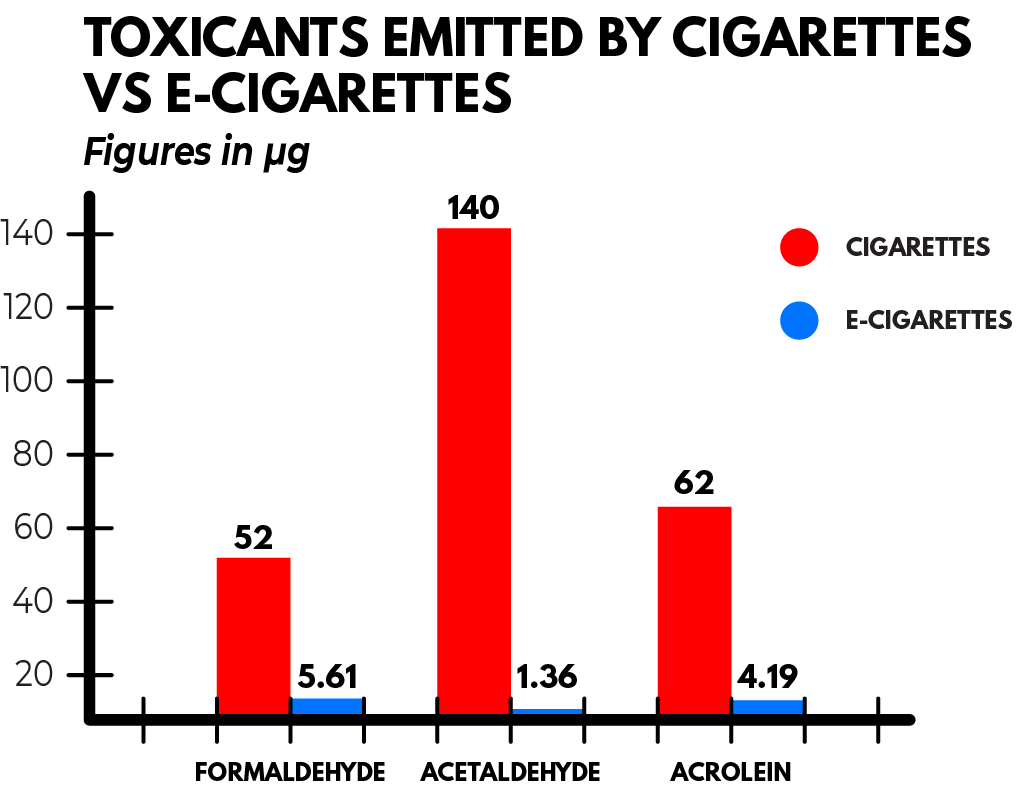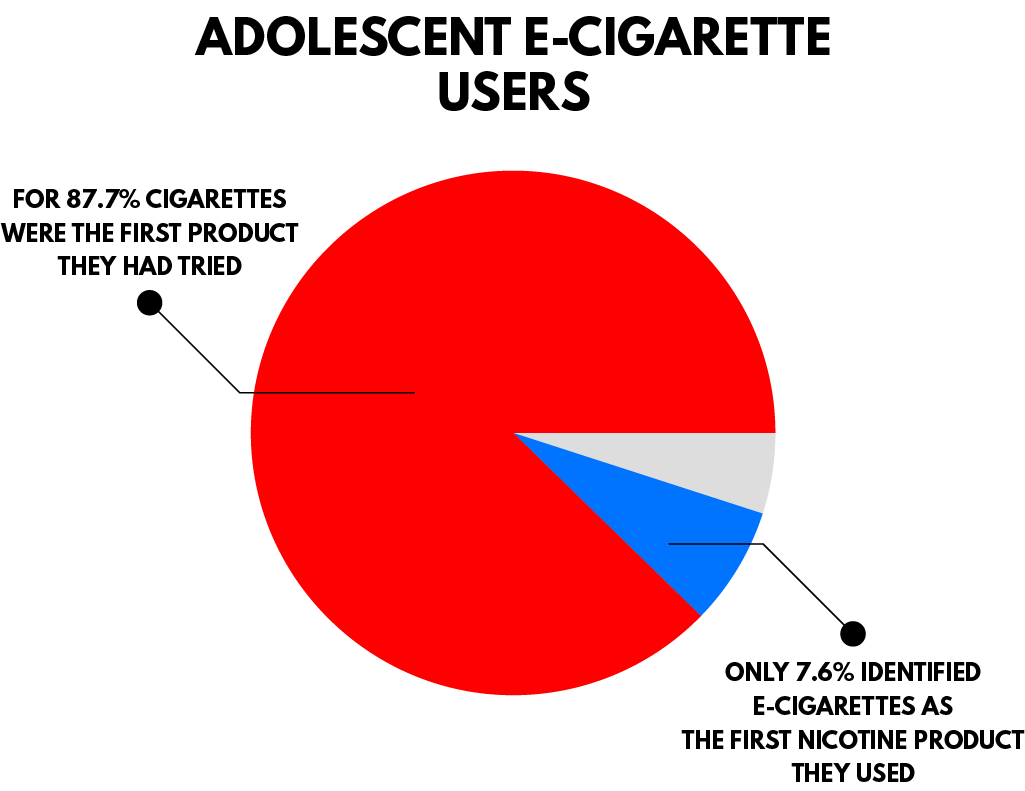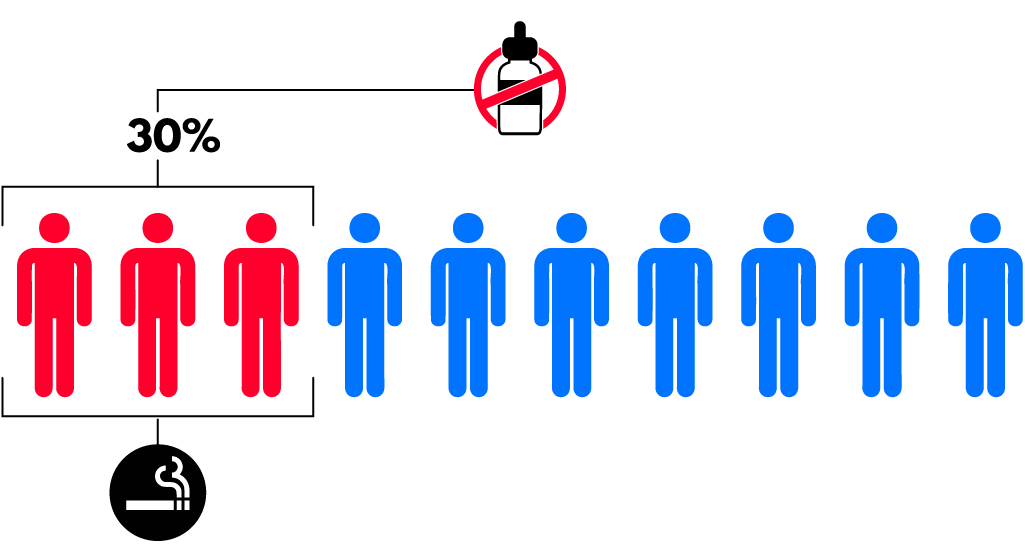Vaping is NOT the Gateway To Smoking: 4 Key Facts
Executive Summary
Vaping is often blamed for encouraging smoking among adults and teens. Such unjustified criticism of vaping prevents millions of smokers around the world from switching to a safer alternative. The gateway rhetoric does not do anyone any good, has no merit, and should be abandoned. In this paper, you will find 4 key facts why vaping is not the gateway to smoking.
FACT #1
The essence of e-cigarettes is different from that of conventional cigarettes, and their purpose is to serve as a safer alternative that reduces health-associated risks.
Vaping has been proven to be 95% less harmful than smoking and is recommended as a means to quit smoking in France, the UK, and New Zealand. Vaping is a gateway away from smoking, and has been used by millions of adults to reduce the health risks associated with tobacco consumption.
Dr. William E Stephens of St. Andrews University, in the British Medical Journal showed that the risk of cancer from e-cigarettes compared to that from smoking is less than half a percent.
FACT #2
Nicotine, also found in e-cigarettes and used in conventional nicotine replacement therapy, doesn’t increase the risk of serious illnesses (heart attack, stroke) or mortality.
According to Yorkshire Cancer Research, “Nicotine is not the cause of death from smoking. Nicotine is not a carcinogen; there is no evidence that sustained use of nicotine alone increases the risk of cancer. Of the three main causes of death from smoking (lung cancer, Chronic Obstructive Pulmonary Disease and cardiovascular disease), none are caused by nicotine. The harm from smoking comes from the thousands of other chemicals in tobacco smoke.”
Misperceptions about nicotine are associated with ”increased odds of quit attempts, lower odds of cessation success and e-cigarette use, and lower odds of using nicotine replacement therapy or e-cigarettes to support quit attempts”.

FACT #3
Youth use of e-cigarettes is rare and most users are current or former smokers.
An often ignored explanation for vaping uptake by adolescents is “common liability.” In other words, adolescents who are likely to vape, are also likely to smoke or drink – e.g. because of personality traits, genetic predisposition, or social and environmental factors. The problem is, most studies out there only account for a few shared risk factors. An in-depth analysis can be found here.
A review by Colin Mendelsohn and Wayne Hall published in the Journal of Drug Policy found that at least 70-85% of all adolescents try vaping after having already started smoking and that regular vaping is very rare among teenagers.
Despite claims about the teens vaping pandemic, between 2019 and 2021, the use of electronic cigarettes among US teens dropped by more than 50 percent from 27.5% to 11.3%.
Overall, smoking rates for adolescents are declining since vaping gained popularity this study found: “use of cigarettes and smokeless tobacco decreased more rapidly since 2012 as e-cigarette use began to increase. Smoking and smokeless tobacco use reached historically low levels among adolescents in the US.”

FACT #4
Vaping flavour bans might increase the cigarettes uptake among teens and young adults and pushes adult vapers back to smoking.
A study by the Yale School of Public Health found that the San Francisco vape flavour ban doubled the probability of high school students to start smoking regular cigarettes. A 2021 study in Nicotine & Tobacco Research suggests that if “vape product sales were restricted to tobacco flavours,” more than 30 percent of young adults in the US (aged 18-34) would switch back to cigarettes.
Two-thirds of adults are using flavours other than tobacco. That means that bans could send many of them back to cigarettes or to the black market. According to Yale School of Public Health flavoured vaping devices are associated with a 230% increase in the odds of adult smoking cessation. As a result, vape flavours are not only instrumental in helping smokers switch, but also ensure that they do not take up cigarettes again. Here can be found more about the consequences of vaping flavour bans.

Policy recommendations:
- Embrace the general concept of harm reduction.
- Endorse vaping devices as an effective tool to help smokers move to a safer alternative to consume nicotine and eventually quit if they desire to do so.
- Guarantee access to vaping products for adults: affordability and variety must be ensured.
- Refrain from introducing flavour bans.
- Allow advertising of vaping products in print, on television and radio in order to inform current smokers better of the harm-reducing potential of vaping nicotine, to reduce illicit trade and prevent adolescents from turn- ing to the black market and conversely take up vaping.


